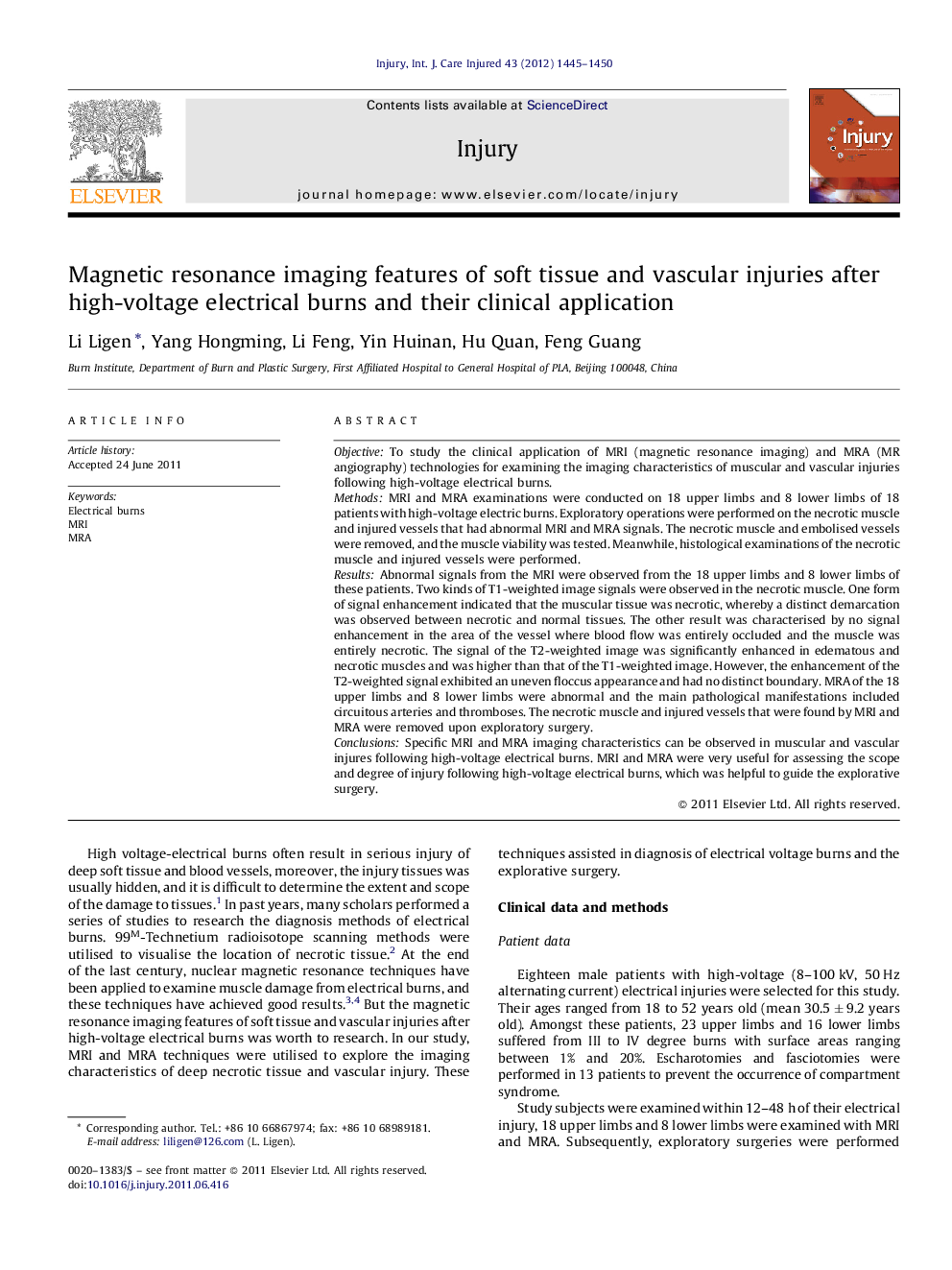| Article ID | Journal | Published Year | Pages | File Type |
|---|---|---|---|---|
| 6084465 | Injury | 2012 | 6 Pages |
ObjectiveTo study the clinical application of MRI (magnetic resonance imaging) and MRA (MR angiography) technologies for examining the imaging characteristics of muscular and vascular injuries following high-voltage electrical burns.MethodsMRI and MRA examinations were conducted on 18 upper limbs and 8 lower limbs of 18 patients with high-voltage electric burns. Exploratory operations were performed on the necrotic muscle and injured vessels that had abnormal MRI and MRA signals. The necrotic muscle and embolised vessels were removed, and the muscle viability was tested. Meanwhile, histological examinations of the necrotic muscle and injured vessels were performed.ResultsAbnormal signals from the MRI were observed from the 18 upper limbs and 8 lower limbs of these patients. Two kinds of T1-weighted image signals were observed in the necrotic muscle. One form of signal enhancement indicated that the muscular tissue was necrotic, whereby a distinct demarcation was observed between necrotic and normal tissues. The other result was characterised by no signal enhancement in the area of the vessel where blood flow was entirely occluded and the muscle was entirely necrotic. The signal of the T2-weighted image was significantly enhanced in edematous and necrotic muscles and was higher than that of the T1-weighted image. However, the enhancement of the T2-weighted signal exhibited an uneven floccus appearance and had no distinct boundary. MRA of the 18 upper limbs and 8 lower limbs were abnormal and the main pathological manifestations included circuitous arteries and thromboses. The necrotic muscle and injured vessels that were found by MRI and MRA were removed upon exploratory surgery.ConclusionsSpecific MRI and MRA imaging characteristics can be observed in muscular and vascular injures following high-voltage electrical burns. MRI and MRA were very useful for assessing the scope and degree of injury following high-voltage electrical burns, which was helpful to guide the explorative surgery.
